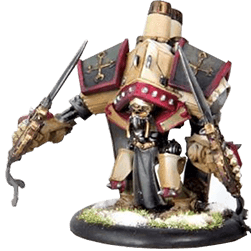Mar. 07, 2020
Poker refers to two meanings: one refers to playing cards; the other refers to games that are played with game props such as playing cards, called poker games, such as Texas Hold'em. There are 54 cards in a deck of cards, of which 52 are cards and the other 2 are cards. The gameplay is ever-changing and various. Today, Cards Game Manufacturer will introduce the production process of poker printing.
Generally speaking, playing card printing includes the following 14 production steps (the steps in different factories may be different):
1. Arrange 54 poker designs into 6 × 9 (54) or 7 × 8 (56) sizes. Because some playing cards need to print 55 or 56 cards, the extra 1 or 2 cards are usually calendars or other advertising information. The paper is also cut to the corresponding size of 6 × 9 (54) or 7 × 8 (56).
2. Four-color front and back printing, and quality inspection. After the printing is completed, the ink needs to be fully absorbed by the paper before entering the next process according to the ink absorption characteristics of the paper.
3. Front filling and drying.
4. Filling and drying on the reverse side. Filling is an important process in poker production. The so-called "filling" refers to a solution of starch and other viscous chemical components, which is evenly spread on the poker paper by a roller.
5. Steel roller extrusion. Because playing cards, as a highly entertaining Cards Game, have thick paper and are composed of three or more layers, if they are not squeezed, playing cards will play for a long time and the front and back will be detached.
Cards Game
6. Glazing. The glazing process refers to coating (or spraying, printing) a layer of colorless and transparent coating on the surface of the printed matter. After leveling, drying, calendering and curing, a thin and uniform transparent bright layer is formed on the surface of the printed matter to enhance Carrier surface smoothness, finishing function to protect printed graphics.
7. Embossing. The cloth effect can make poker look more upscale, and many advertising poker customers want the cloth effect. The cloth machine consists of two parallel steel rollers. When the poker paper passes through, the texture on the steel roller is pressed onto the paper to form a cloth effect.
8. Perfume. Some customers need poker to have a special flavor, especially some food or cosmetics advertising poker (the craftsmanship is now rarely used, as is the case with gilded edges).
9. One die cutting and sorting. Use a die-cutting machine to cut 54 cards horizontally into 6 (6 × 9,54) or 7 (7 × 8,56); then cut vertically into 9 (6 × 9,54) or 8 ( 7 × 8, 56), and automatically sorted to form an arrangement in which the king is at the top and the king is at the bottom. At the same time, a quality check is performed. At this time, the corners of the poker are still rectangular, not rounded, and the poker is larger than the final 57x87mm.
10. Secondary die cutting. Put the once-cut and sorted poker into an electric 57x87mm round corner die cutter to form a poker core that finally meets the specifications.
11. Heat shrinkable packaging for poker core. A pack of 54 cores of a pack of poker was shrink-wrapped in plastic paper. The heat shrinkable inner core is convenient for packaging and moisture-proof. (Note: Generally, the heat shrinkage of packaging with self-shrinking plastic film will deform the poker unevenly).
12. Printed poker locker, glazing, paste poker locker.
13. Put the poker core into the poker box, heat shrink it, and add golden brushed. The brushed gold color is the same as that on the outside of the cigarette case, making it easy for users to open. (Explanation: This heat shrinkable film does not need heat shrinkage. The transparency is not good and the gloss effect is not good.)
14. Shrink pack every 10 pairs of poker. Shrinkable packaging is again for easy inventory and for quick packaging into corrugated boxes.
Previous: Four Misunderstandings of Playing Card Paper
Next: Math Games in Card
